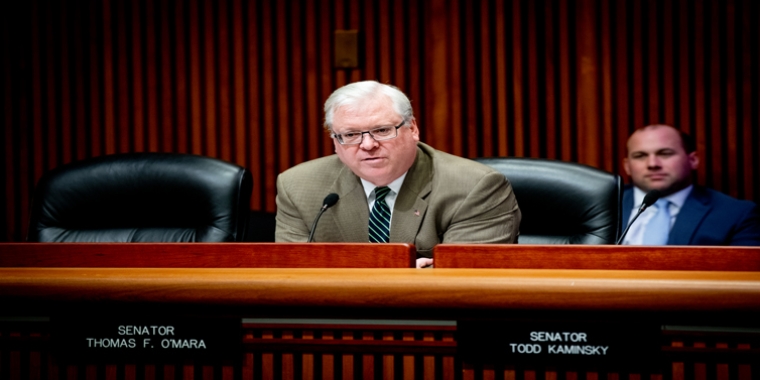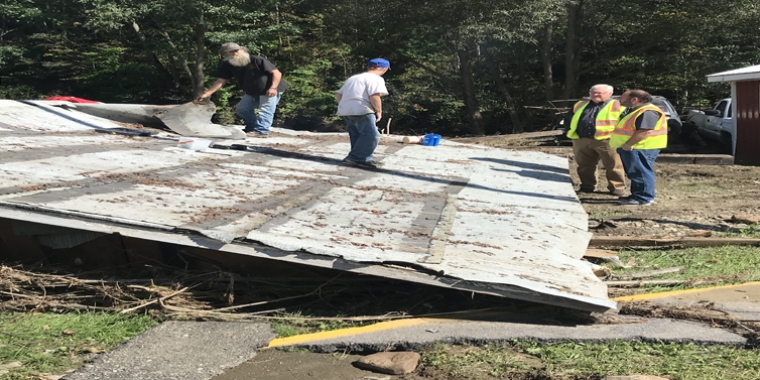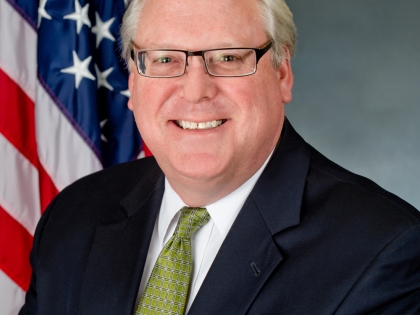
Area state legislators reintroduce legislation to encourage emergency services volunteers
February 5, 2016
-
ISSUE:
- Emergency Services or FEMA

Elmira, N.Y., February 5—A new economic impact study released this week by the Firemen’s Association of New York State (FASNY) showing that volunteer fire departments save the local communities and local taxpayers they serve more than $3 billion annually has prompted State Senator Tom O’Mara (R,C,I-Big Flats), Assemblyman Phil Palmesano (R,C,I-Corning) and Assemblyman Chris Friend (R,C,I-Big Flats) to renew their call for the approval of legislation they sponsor aimed at helping localities recruit and retain volunteer firefighters and other emergency services personnel.
The area lawmakers have reintroduced legislation (S.2780/A.4385), known as the “Omnibus Emergency Services Volunteer Incentive Act,” as part of ongoing state-level efforts by FASNY and others to keep drawing attention to a challenge that many believe poses a property tax crisis in waiting and other crises for many rural, upstate communities.
In a joint statement, O’Mara, Friend and Palmesano said, “The new FASNY study reaffirms the absolute importance of keeping our volunteer ranks as strong as possible. We have to keep sounding the alarm on the volunteer recruitment and retention challenge, and we have to keep seeking solutions. This legislation helps keep the challenge in front of the Legislature. Incentives aren’t the only answer, but they can be an effective part of a broader response. The volunteer fire department has anchored so many of our communities for so long and we can’t overlook the fact that many are at risk. It endangers the safety and security of cities, towns and villages throughout the Southern Tier and Finger Lakes regions, and statewide. And as the new FASNY report makes clear, it’s a property tax crisis in waiting.”
According to the FASNY study, “Tax Savings and Economic Value of Volunteer Firefighters in New York,” the state’s 100,000 volunteer firefighters save taxpayers more than $3 billion annually. Specific findings include that:
> an additional 30,822 career firefighters would be necessary to convert to an all-paid service statewide;
> the annual cost of an all-career service would be $3.87 billion;
> there would be a one-time cost of $5.95 billion to acquire existing stations/structures, vehicles and equipment -- approximately 1,300 stations would have to be built new or reconstructed; and
> property taxes statewide would rise between 3.3% and 123%, with an average increase of 26.5%.
The FASNY report notes, “New York State as a whole relies heavily on volunteer fire departments. Of its 1,795 municipal fire departments, 89% are volunteer. Volunteer firefighters are most prevalent in smaller, suburban and rural communities that have a lesser tax base than larger towns and cities. That these communities rely on volunteers testifies to cost savings from volunteer departments, and conversion to paid departments would be a particular burden for these localities.”
For regional counties, the FASNY study estimates that the property tax increases that would result from moving from volunteer to all-paid fire fire services would be: Chemung (33.8% increase), Schuyler (36.1%), Steuben (40.3%), Tioga (48%), Tompkins (45.4%) and Yates (33.8%).
The full study can be found online at: http://www.fasny.com/EconomicStudy/
While FASNY notes that federal SAFER grants and other efforts, including the organization’s annual RecruitNY campaign (scheduled this year for April 23-24), have helped to recruit and retain more volunteers statewide in recent years – the recruitment and retention challenge remains a serious one in many places.
The O’Mara-Friend-Palmesano legislation would:
> provide a $400 state income tax credit for volunteer firefighters and ambulance workers who have been active for four or more consecutive years;
> exempt motor vehicles owned and used in the performance of duty by an emergency services volunteer from motor vehicle registration fees and vehicle use taxes;
> authorize local volunteer fire and ambulance companies to use state-administered funds, collected annually through a two-percent fire insurance premium tax on out-of-state insurers, to help offset the cost of health insurance for their members; and
> direct the state Higher Education Services Corporation (HESC) to create a volunteer recruitment service college loan forgiveness program.
Share this Article or Press Release
Newsroom
Go to Newsroom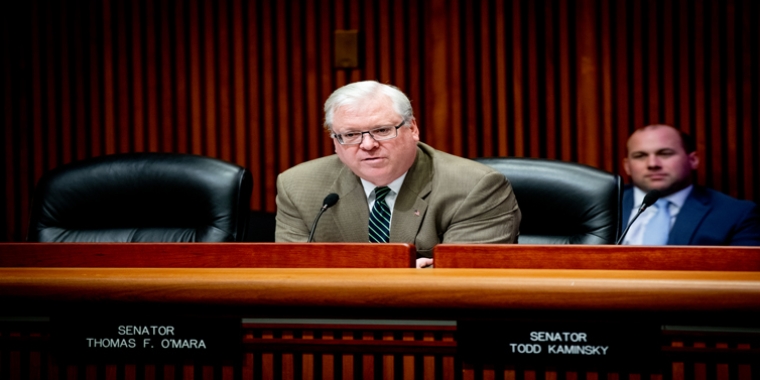
O’Mara named ‘Legislator of the Year’ by the American Red Cross
February 6, 2019
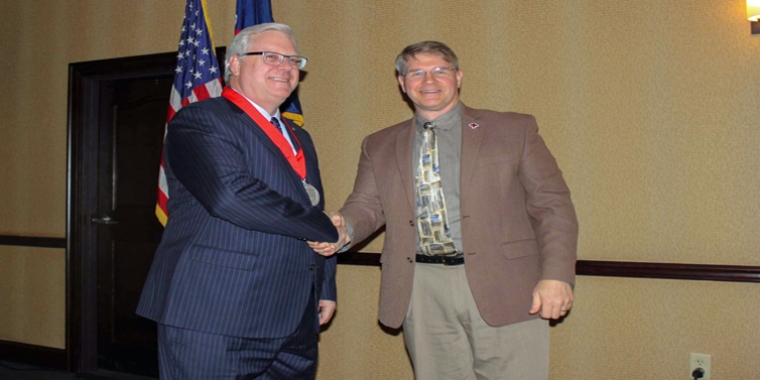
O’Mara continues to push legislation to end unfunded state mandates
January 31, 2019
